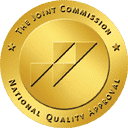Creating a Culture of High Performance Ownership
 This series of articles is published with permission from Douglas Langager. Doug graduated from the Navy’s cardiopulmonary program in Bethesda, Maryland, in 1975. From 1983-1988, the cardiac catheterization program at Brooke Army Medical Center, Fort Sam Houston, Texas, was under his care. After retiring from the Army, he worked as both a supervisor and staff educator at Providence Hospital in Portland, Oregon and University Hospital in Augusta, Georgia. Mr. Langager then worked at Berkeley Medical Center in Martinsburg, West Virginia and recently retired from patient care. He continues an active relationship with the cardiovascular community through education and thought leadership.
This series of articles is published with permission from Douglas Langager. Doug graduated from the Navy’s cardiopulmonary program in Bethesda, Maryland, in 1975. From 1983-1988, the cardiac catheterization program at Brooke Army Medical Center, Fort Sam Houston, Texas, was under his care. After retiring from the Army, he worked as both a supervisor and staff educator at Providence Hospital in Portland, Oregon and University Hospital in Augusta, Georgia. Mr. Langager then worked at Berkeley Medical Center in Martinsburg, West Virginia and recently retired from patient care. He continues an active relationship with the cardiovascular community through education and thought leadership.
This article is the first in a series of three articles by Doug that will discuss Creating a Culture of High Performance Ownership Nurses and Tech’s in the Cardiac Cath Lab.
In a previous article, I wrote about my philosophy on the orientation of new employees.1 It is a basic guide for the management of onboarding new employees, and promotes an outcome of knowledge, quality, and safety as new staff learn to perform the tasks they were hired to do and fit in. Today, we will discuss what comes after the orientation, because our job is not complete.
Once the orientation process is finished, we assume new employees will “pick things up”. They will! But who knows what they’ll pick up and from whom? Now that they have learned appropriate tasks, what is the objective? Free from a preceptor, where does your new employee go from here? Do you just want them to show up for work, wait for a work assignment, and then go do cases? Goals are needed to map employee success after orientation. Without a destination, you have no way of measuring success.
What we don’t take into account after orientation is that our staff will seek positions that strike a balance between fitting in and standing out. At work, we subconsciously want to fit in; most of us evaluate ourselves by our ability to throw ourselves in with the huddled masses.2 Culture is the behavior that results when a group arrives at a set of unspoken and unwritten rules for working together.3 If leadership relies on others to set these “unspoken and unwritten rules”, it becomes a formula for failure. Management must set measurable goals for the new employee in order to help them become a high performer. Such goals might include the following: performing a right heart cath with speed and efficiency, mastery of the hemodynamic monitor icon prompts, achieving the intellectual deftness to measure and edit pressures and validate calculations, setting up a sterile table and draping a patient at ST-elevation myocardial infarction (STEMI) speed, and the ability to operate and troubleshoot x-ray equipment.
Every organization has a culture, though in many cases it is a culture that developed out of a negotiation of social values rather than by conscious design.3 Culture is the only sustainable source of competitive advantage, and thus cultural “blueprinting” is crucial.2 Our culture should be about high performance: using superior knowledge and techniques to perform tasks and handle emergencies. As educators, supervisors, managers, and directors, our goal needs to be communicating a culture where value is placed on effort.4 We do a great disservice (and become ill-prepared for success) if we train staff members to value abilities OVER effort. Our effort sets us apart; our ability is the byproduct. Competence in most areas (ability) is directly related to “time on task” (effort).3
Years ago, when I worked as a supervisor at University Hospital in Augusta, Georgia, the cath lab moved to a skilled-based pay system. The financial reward for employees was linked to their contribution. With the direction of my manager, Theresa Waters, and human resources, we created an exciting work environment. Unwittingly, we changed the culture! In the past, individuals had been asked simply to use their scrub, circulating, or monitoring skills during cases. Now we wanted, needed, and expected more from staff, and leadership created an improved compensation system for employees involved in quality, cost reduction, and mentoring. A great working environment ensued and high-level performance became the norm.
This change also affected our patient care techs, who learned to perform electrocardiograms (ECGs), draw lab work, and pull sheaths, and these techs became an invaluable asset. Patient care techs were also given a career pathway — an opportunity to train as cath lab technologists. Our nurses, technologists, and physicians provided support for this training because we were all vested. Workload was taken off the holding area nurses and it became extra time they spent with our patients. Our patient experience became second to none.
Another milestone that occurred during this transition was that management provided registry review classes for both nurses and technologists. The information gained was significant and became solid preparation for staff to obtain their CCRN, CVRN, RCIS, or ARRT-CIR if they chose. There was a new natural order. Newfound knowledge and accomplishment brought more opportunities. When asked to become super users and be involved in quality measures (to be, in other words, working at a high performance level), the staff were more than capable to take on these tasks.
Some of the most influential employees in an organization don’t have a management title. They are leaders because they see what needs to be done and are willing to get involved. Windows of opportunity were created, and staff became willing to make suggestions and influence others to work with them.3 Motivated employees (high performers) tend to be creative and productive, and go the extra mile, which distinguish their work from others.
On the other side of the coin, there were some individuals who chose not to participate. Unmotivated employees (low performers) are likely to spend the minimum effort to do the job and produce low-quality work. They lack initiative, they feel entitled, they produce disruptive behavior, and they sabotage the effort of others. One toxically negative person can drag down the morale and productivity of everyone. It is a core leadership responsibility to create a workplace environment where toxic emotional negativity is not tolerated.3 From a salary point of view, employees who chose not to join in this undertaking fell into a pay range reciprocating their contribution (a pay cut). A timeframe was set for goals to be achieved. Staff had deadlines and we were the better for it. We lost a couple of individuals as they searched for other opportunities, but as you can surmise, the workplace culture shifted to high performance, quality, and stability.
When teams see their mission is to become superior nurses or technologists, they own it. This also helps the organization address customer challenges. After all, our performance-oriented work ethic5 should be about patient care. You can hold people accountable for showing up on time and for fulfilling the terms of their job descriptions, but can you hold them accountable for being committed and engaged? Yes! Why not raise your expectations and lower your tolerance level for deviation from those expectations? Then efficiently and effectively communicate that to your staff. They can’t read minds and they are very poor at reading facial expressions.
If you want to have HIGH performers, it requires effort on the part of leadership! We need to institute an orientation and annual competencies that do not only focus on the prerequisites of performing the job. Organizationally, the orientation of the new employee is about learning to perform tasks. The best people (high performers) in any field are those who devote time to deliberate practice explicitly intended to improve performance. This concept has to become part of our culture. Our mindset should be about best practice and high performance. Anything we put down on paper, any information taught, and how the work force is supervised all must originate from these values in order to change the culture.
5 Basic Skill Levels of Development in every Cath Lab




